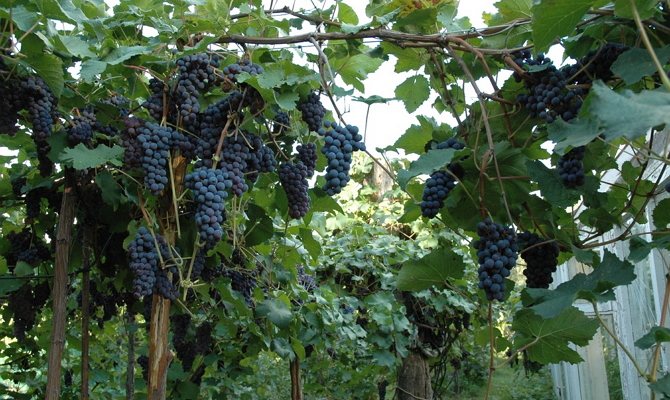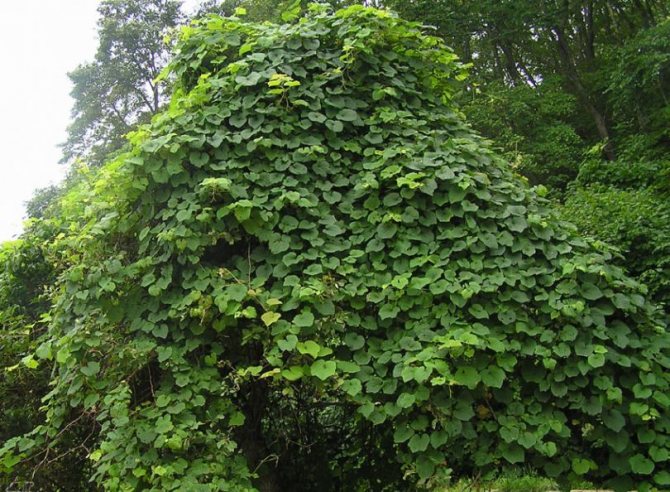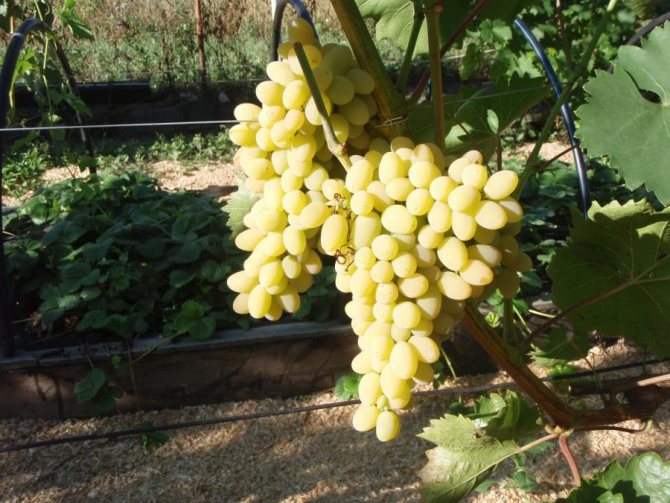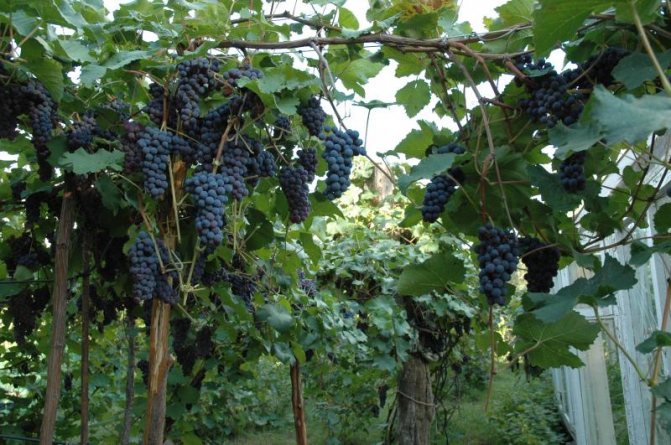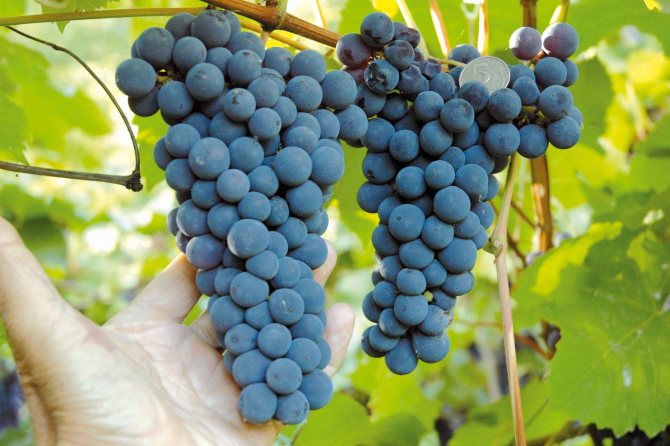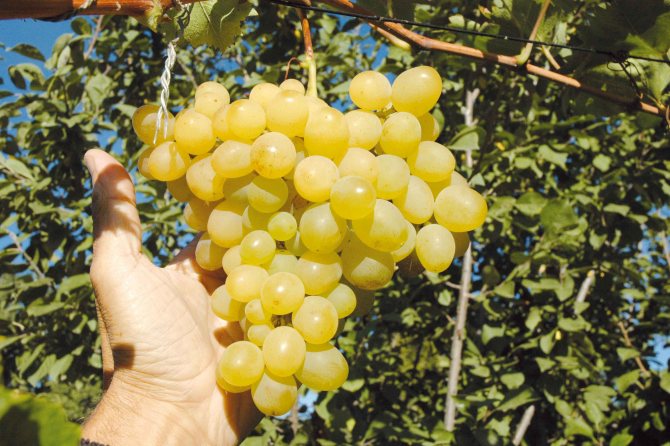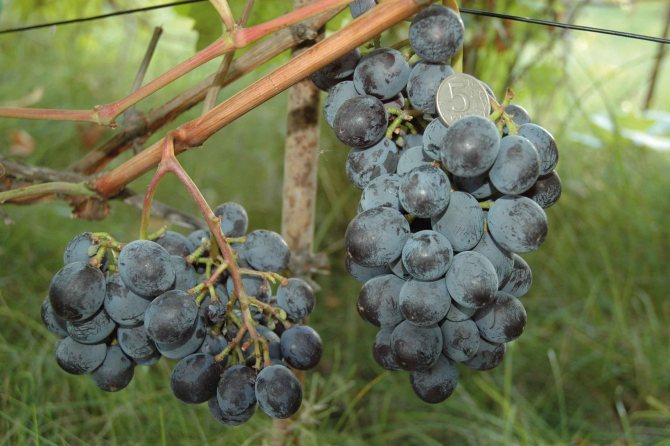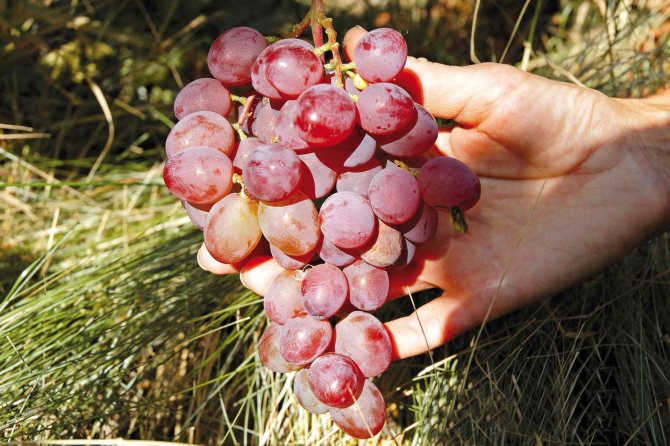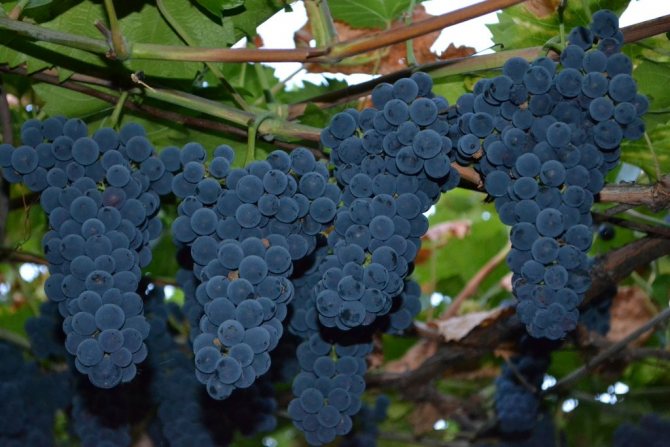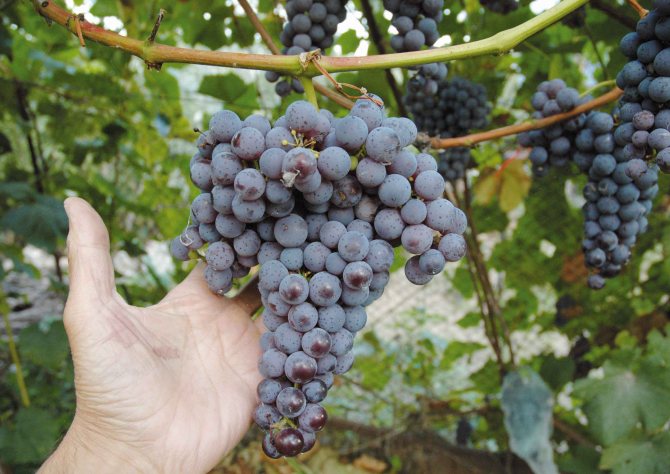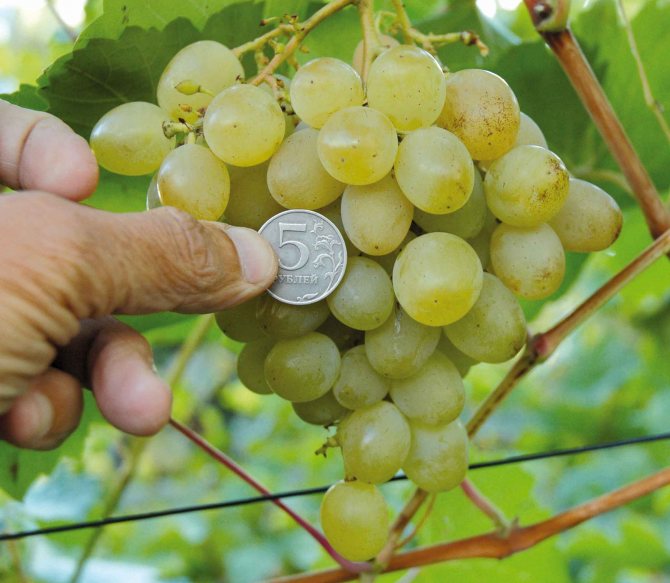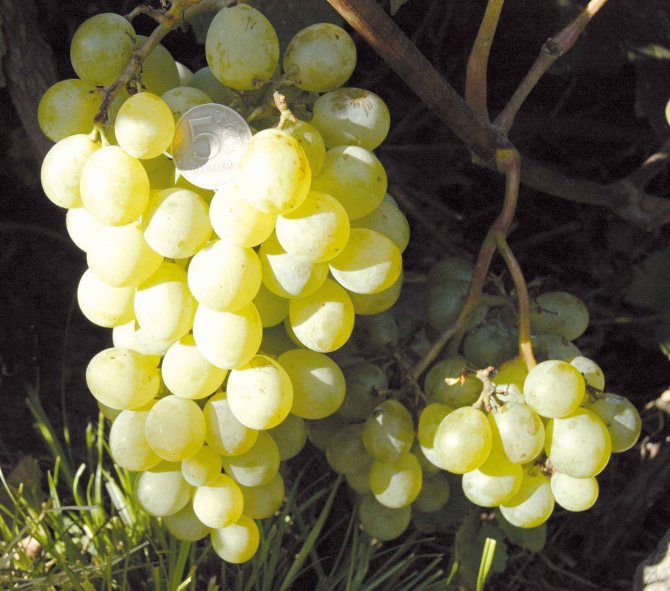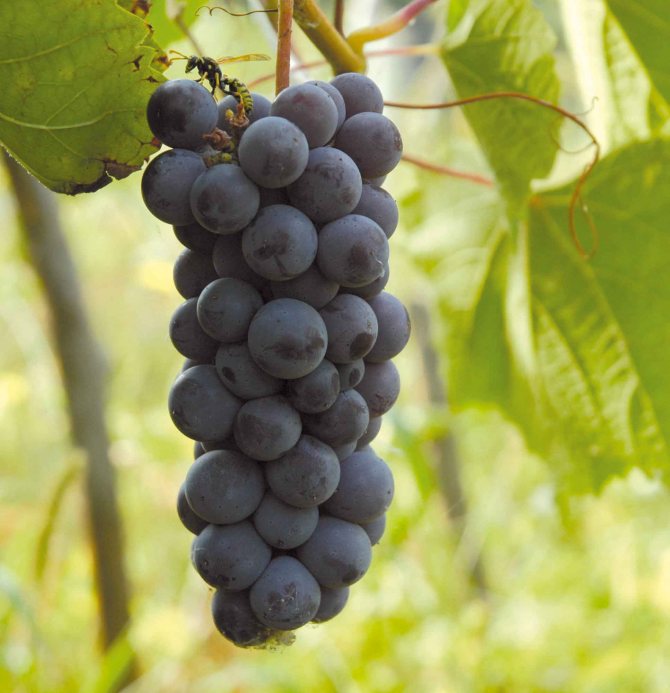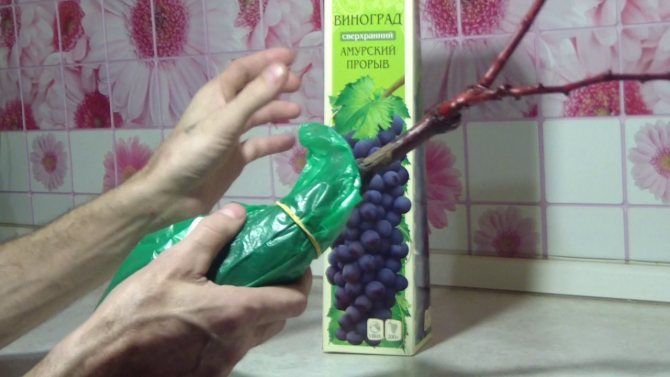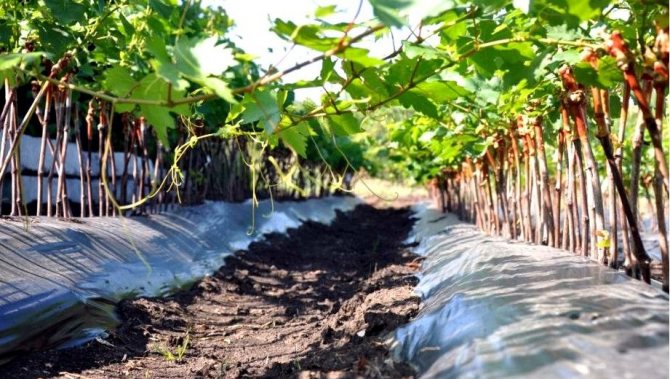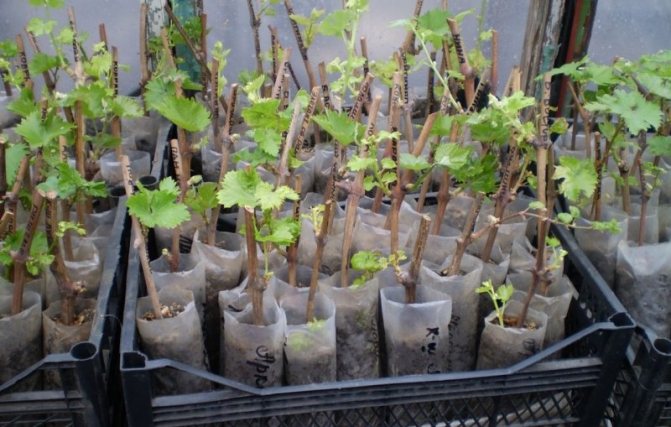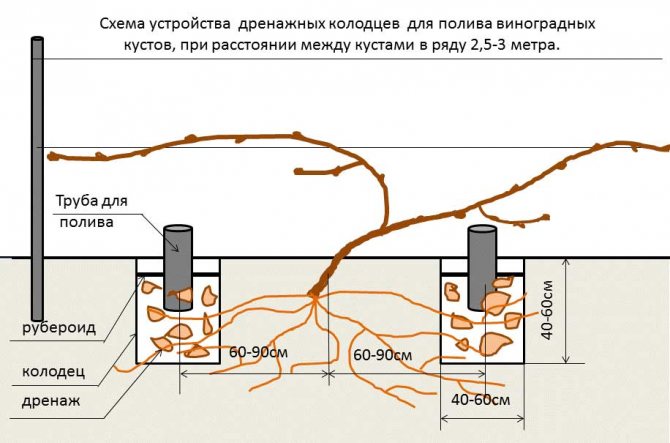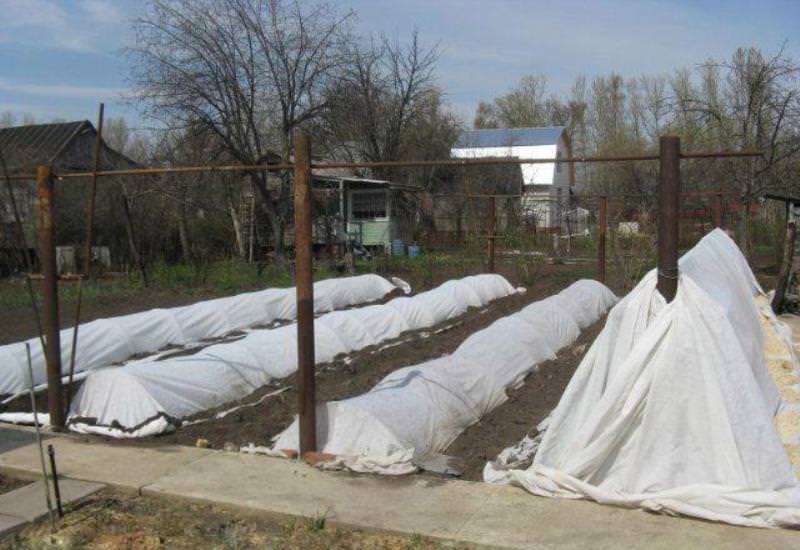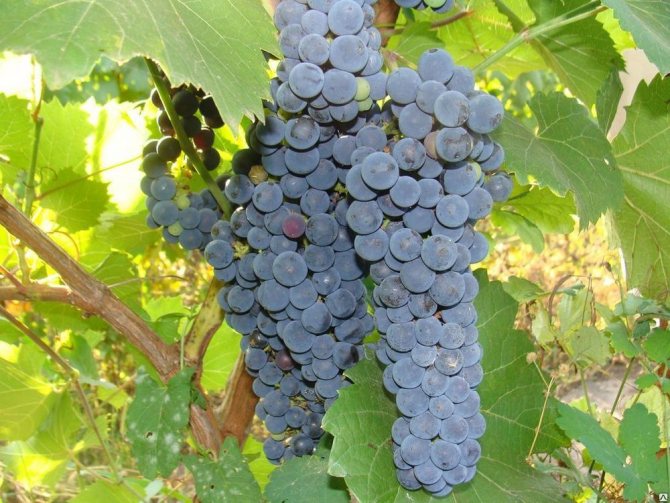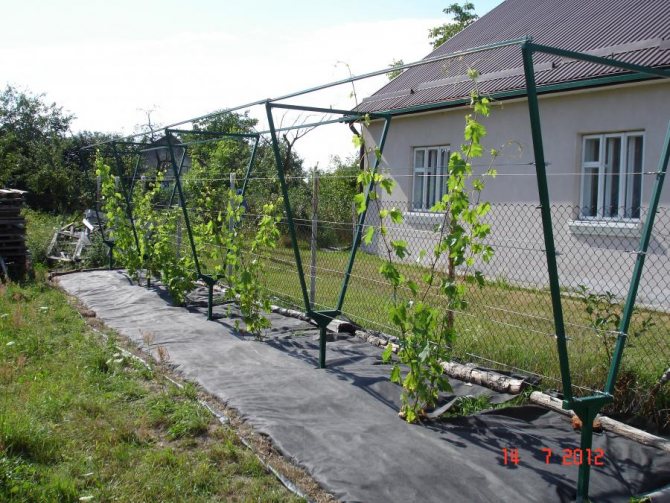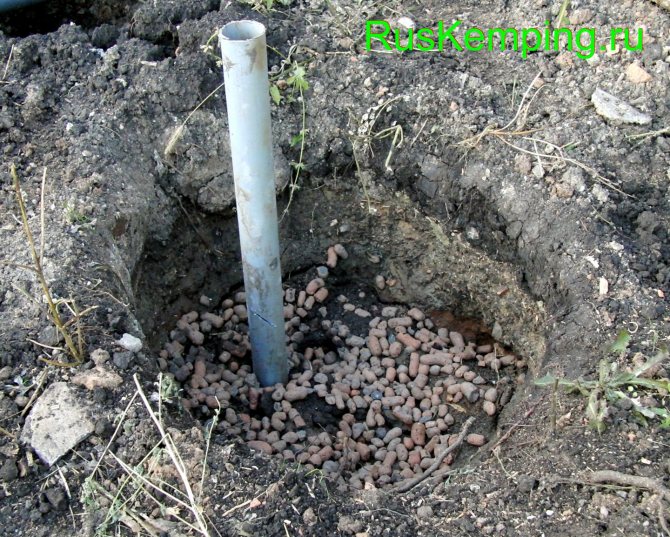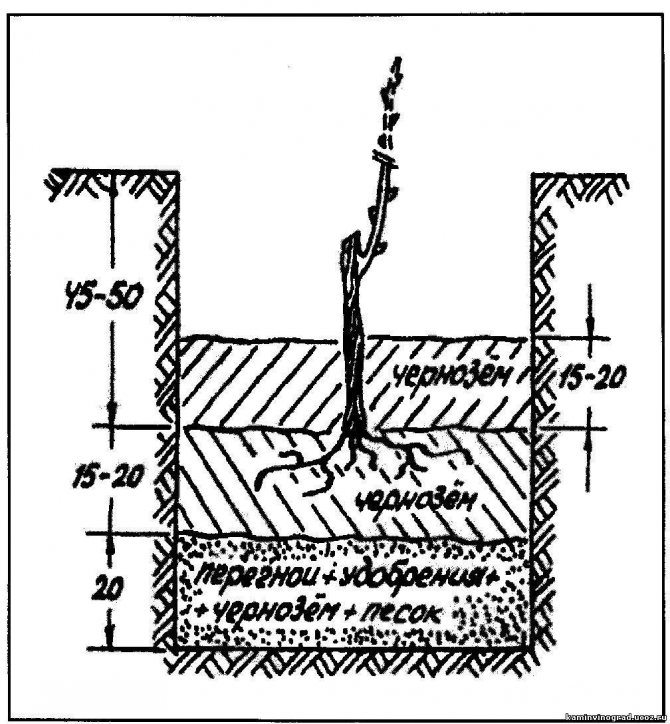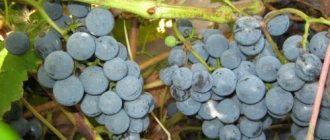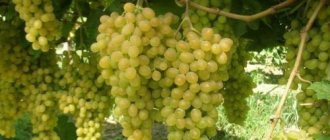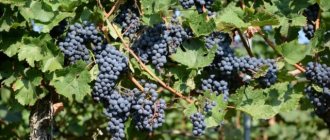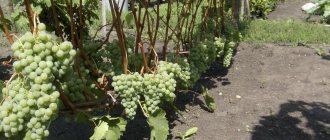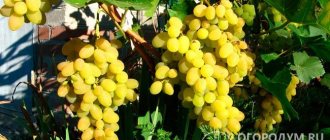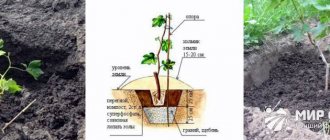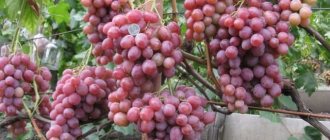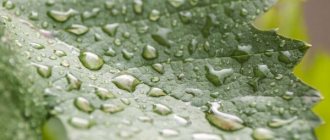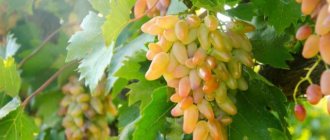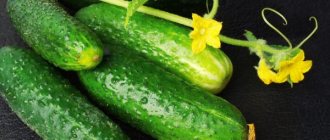The Amur Breakthrough (Odin, Potapenko-7) grape variety, popular among amateur gardeners, was bred by the great Russian winegrower with a worldwide reputation, Alexander Ivanovich Potapenko.
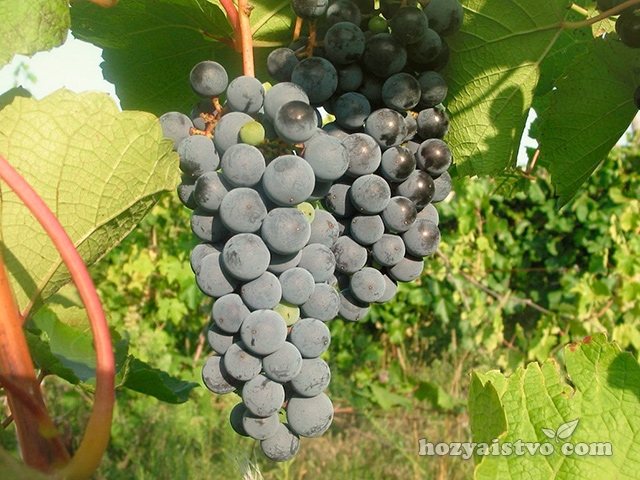
As a result of numerous experiments on crossing local winter-hardy varieties, it was possible to obtain a completely new shape of the vine, with high frost resistance and resistance to diseases.
In addition, the breeder managed to improve the taste properties of the berries of local forms of grapes, making the variety suitable for both table consumption and the preparation of juices and high-quality wines. The average bunch weight at the Amur breakthrough is 200 - 300 grams, the berries are dark purple in color with a high sugar content (23%). Due to the high sugar content in the berries and their pleasant delicate taste, the "breakthrough" received high marks from viticulture experts.
A bit of history
Photo of grapes:
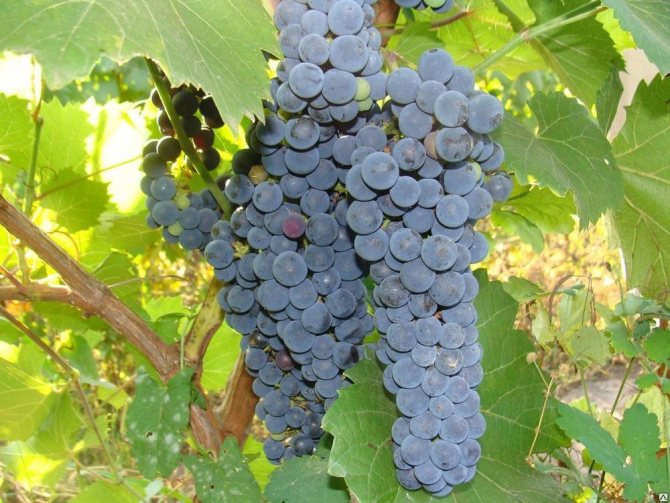

The Amur Breakthrough grape variety is the first brainchild of a series of frost-resistant varieties bred by the Russian scientist-breeder, now irrevocably gone, Alexander Ivanovich Potapenko, whom grateful descendants now call the great Russian winegrower.
The genetic progenitor of the Amur breakthrough is the wild Amur grape. The idea to grow a table grape variety out of it at that time seemed to many to be an absurd, unrealizable dream, voiced by A.I. Potapenko, but today it has become a reality. In 2020, the variety is included in the State Register of Breeding Achievements of the Russian Federation.
The patent holder of this variety is listed as the successor of the case of A.I. Potapenko, a breeder and devotee from the Saratov region, Y.I. Sidorenko.
Description, characteristic differences of the variety
Many growers grow the Amur Breakthrough as One. The variety is distinguished by good growth vigor - during the season the vine grows up to 2.5 m. Liana weaves beautifully, and with a sufficient area of the trellis or the wall of the building, it can grow up to 35 m in length and up to 20 cm in thickness.
Young shoots are green, but in autumn they begin to darken, and for winter rest they "dress" in a thin bark of a brownish-red hue. In the future, the reddish tint disappears, the bark turns brown and begins to flake off - the older the vine, the more delamination is observed.
The Amur breakthrough has incredible frost resistance - without any shelter, the vine can withstand frosts at minus 40 °. Thanks to this ability, this variety can be grown without shelter even in the northern regions, not to mention the middle lane.
Unusual at the Amur breakthrough and foliage. Its leaves are large, up to 25 cm long, and very beautiful, especially in autumn, when they turn from light green to purple-red. Because of this feature, the variety is loved by landscape designers, using it to decorate fences, alpine slides and gazebos.
The growing season begins early - in early May. The vine is covered with small yellow, pleasantly smelling inflorescences. Although at this time it is better not to approach the bush, because because of the large amount of nectar in the inflorescences, many bees "work" on it.
A feature of this variety can be considered the fact that its vine ripens simultaneously with the ripening of the berries. Depending on the region of cultivation and weather conditions, this occurs in late August - early September.
In the northern conditions usual for its cultivation, the variety is exposed to high immunity, and practically does not get sick. According to unofficial reviews of amateurs-winegrowers, when grown in the south, the variety's immunity weakens. But there is still no official data confirming or refuting these statements.
Gardeners reviews
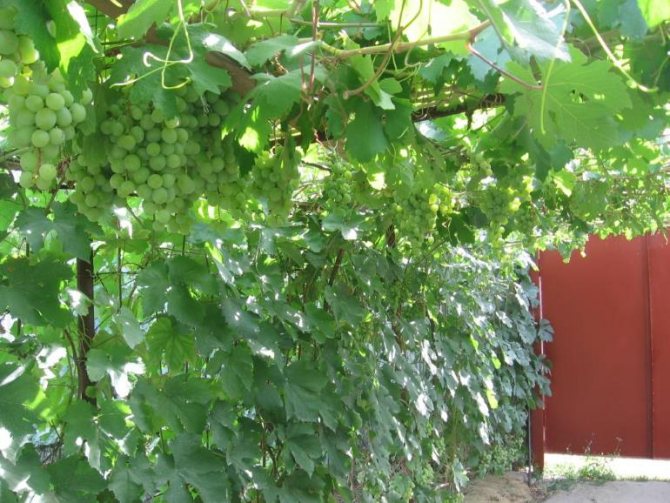

Gardeners from the southern regions often let Triumph on arches and pergolas.
For about five years now, the Triumph grapes have been pleasing my family with a plentiful and tasty harvest. From the first two seedlings, I now have a mini-vineyard. I recommend this variety to everyone. (Our neighbor in the garden, Anatoly Petrovich.)
I planted one Triumph grape for testing. In the third year, he made me happy with the first harvest. The bunches are not very large yet, but in the future I hope for a better result. (Anastasia from Voronezh).
Brief characteristics of berries
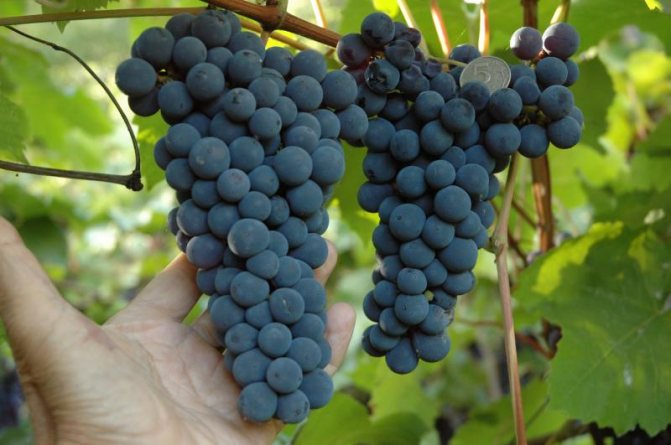

The berries at the Amur Breakthrough are small, with an average weight of about 4 g, round, up to 1.5 cm in diameter. The main color of ripe berries is dark blue, although in the light some berries in clusters appear purple or pink.
The berries are very sweet, their sugar content reaches 23%. Not all southern varieties, traditionally sweeter than northern ones, can boast of such an indicator. The flesh of the berries is juicy, fleshy, protected by a thick elastic skin, which bites well and does not bring disharmony into the flavor bouquet of berries. The taste qualities of Amur breakthrough berries are rated at 4 points on a 5-point scale.
How to choose quality seedlings when buying
The quality of the future vineyard and its vital activity to a greater extent will be determined by the quality of the planting material. Experienced gardeners recommend purchasing culture seedlings in special nurseries or from long-proven sellers.
Important! The plant is rarely grown commercially. Winegrowers prefer more elite varieties.
Before purchasing, you should conduct a visual inspection of the planting material and pay attention to the following aspects:
- Root system. The seedling should be well developed, healthy, strong, not dry root shoots, without rot, damage, pests. Roots are a sign of poor planting material and should be discarded.
- Shoots. A good seedling should have mature shoots and a few fully formed buds. In this case, the diameter of the cutting should be at least 5 mm.
- Leaves. A large number of leaves on a seedling, as well as a stiff trunk, will take moisture and nutrients from the plant, as a result of which the culture will not take root well and bear fruit poorly.
- Graft. The grafting site must be visualized on the stem. Its absence suggests that the seedling was grown without observing the basic rules of agricultural technology.
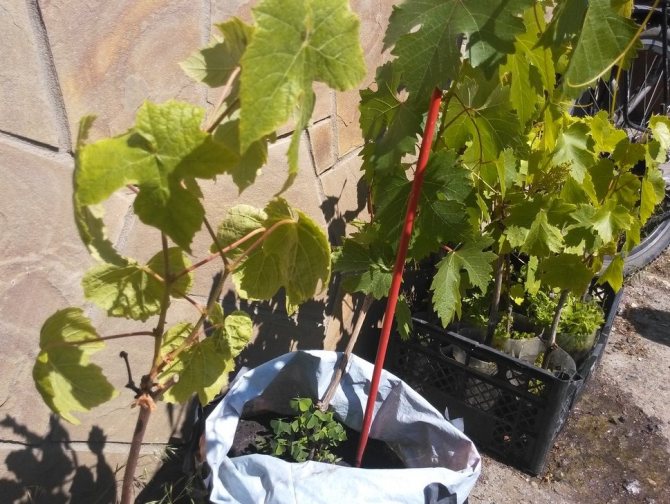

Features of fruiting
The berries at the Amur Breakthrough are collected in large weighty bunches. In length, they grow up to 25 cm, and weigh on average about 400-500 g, although with proper care they can weigh twice as much.
The Amur breakthrough belongs to the mid-late varieties. The berries ripen in late August - early September. Berries are not afraid of the first autumn frosts, getting under their influence, they only become sweeter.
Unlike most grape varieties, the Amur breakthrough practically does not require the formation of a crop. Due to its plasticity and great strength of growth, it can easily endure additional stress, and this does not in any way affect the ripening time, size and taste characteristics of the berries.
Care advice
Competent care is also important.
Pruning
Pruning is required. This is done at least 4 eyes along the length of the fruit arrow. The arrows are fixed. Pruning is also carried out before wintering.
Top dressing
Top dressing is carried out at the stage of flowering and formation of the ovary.Top dressing:
- 3 weeks before flowering (organic);
- after the color has dropped after 2 weeks (also organic);
- before ripening for several days (potassium sulfate and superphosphate);
- after harvest (in the same way as the third).
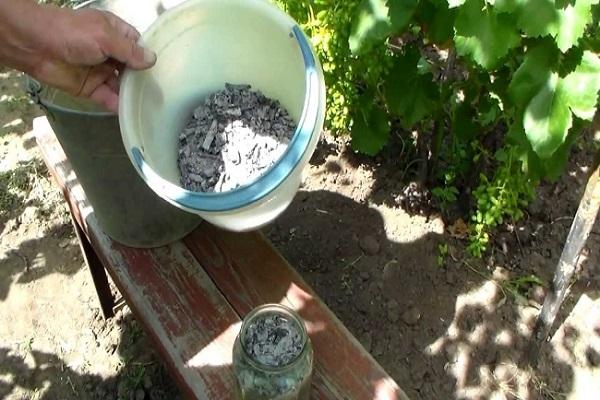

Watering
It is possible to collect the largest amount of berries only if the plant is regularly watered. A drip technique is used, while feeding is done during watering.
Watering is carried out only at the beginning of ripening. It is reduced when the berries begin to dye. But after their staining and ripening, it is not recommended to add water.
Preparing for winter
The Triumph variety is distinguished by its tolerance to low temperatures. But it is worth accustoming the plant to this. In the first two to three years, the vineyard is protected in the winter in the usual way. After the lapse of time, one sleeve is left. If normal, then in the fifth year they do not cover at all.
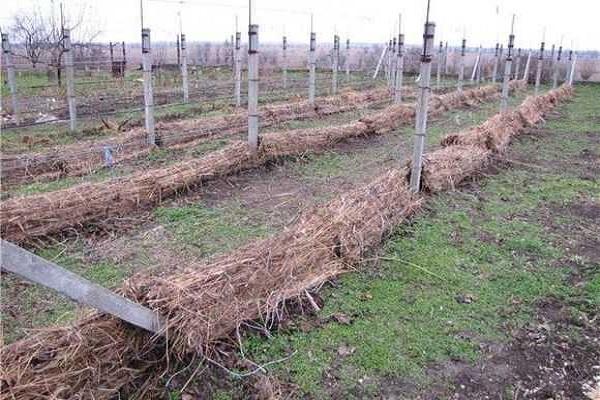

Harvesting and processing
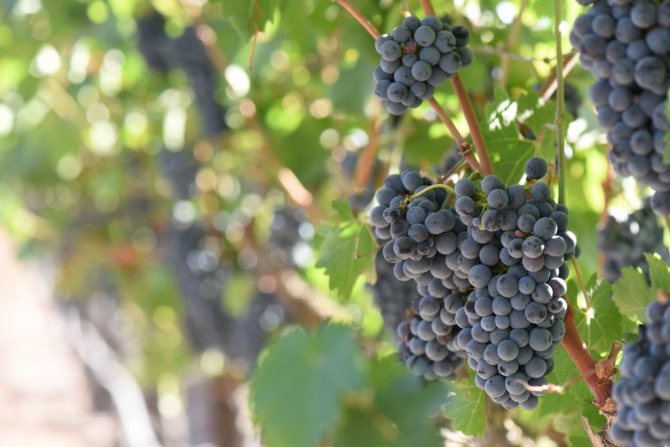

With proper care from the Amur breakthrough bush, you can get up to 10 kg of berries, and in years favorable for its cultivation, much more. According to some reviews, from the old bushes, the vines of which trudged along the gazebo or the wall of the building, it was possible to "remove" up to 1 cent. berries.
Thanks to the thick elastic skin, the berries of the Amur breakthrough are not damaged during collection and transportation. Also, this skin is "too tough" for wasps, who love to feast on sweet grape juice and often spoil the berries and whole bunches of many varieties of grapes.
The Amur Breakthrough grape is universal - it can rightfully be attributed to both table and technical varieties. The berries are intended for fresh consumption and for processing into juices, compotes or jams. Berry seeds can be used to extract essential oils. And some enterprising craftsmen use them even to prepare a substitute for coffee.
The variety is especially popular among winemakers - the wine it turns out is sweet, delicate, with a rich taste and exquisite aroma. The sugar content of wine from Amur breakthrough berries reaches 25%, and the acidity index does not exceed 7%.
How to propagate by cuttings
There are several ways to propagate "Amur" grapes: by seeds, layering or cuttings. The last two are used in the household. Breeding with layering is practiced in the spring. To do this, an air shoot, inclined to the ground, is bent even lower to the soil, instilled with a small layer of substrate and fixed with wooden pegs or other materials. Over the summer, the cuttings can take root and germinate well.
When breeding a culture with cuttings, it is recommended to prepare planting material in the fall. For this, green shoots are placed in a container with sand, provide high-quality care (watering, lighting) and keep until spring. Before the spring planting, the seedlings are waxed, that is, the upper part of the vine is covered with a thin film of paraffin. Then they are placed in a special solution that helps to activate the growth of the root system.
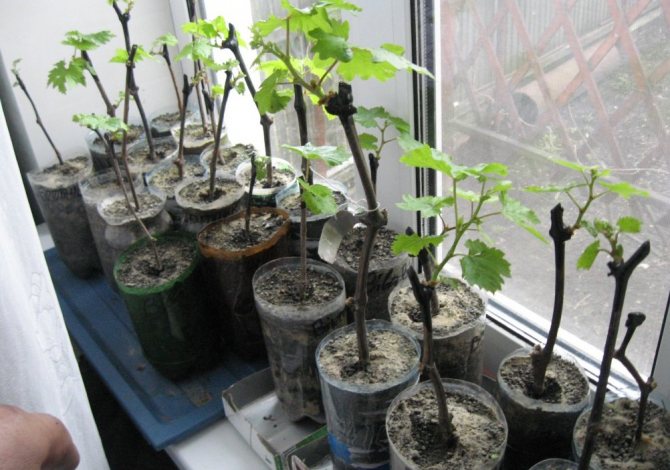

Planting a rooted cuttings is practically no different from a conventional planting. Planting material requires fertile soil, abundant timely watering, good lighting and no drafts.
"Amur" grapes will be an excellent option for novice gardeners. In addition to the fact that the variety is unpretentious in care and is able to adapt to adverse environmental conditions, it has excellent resistance to ailments and consistently pleases with high yields. Cultivating this culture, you can not only taste its exquisite fruits, but also enjoy delicious, aromatic and high-quality wine.
Secrets of growing Amur breakthrough
Landing scheme:
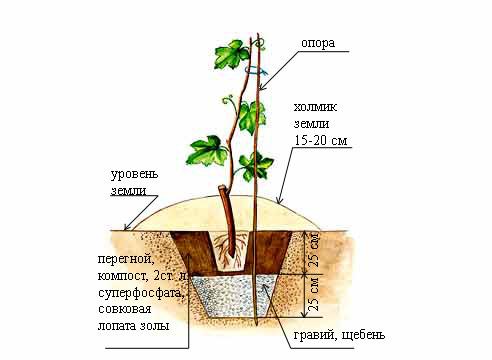

Amur breakthrough is grown mainly by cuttings.You can grow its vine from seeds, but with this method of propagation, there is a risk of completely or partially losing varietal characteristics. Simply put, there is, albeit a small, probability of getting a bush of wild grapes instead of the Amur breakthrough bush. But at the same time, with this method of cultivation, sometimes the varietal characteristics of the vine are even better than that of the mother bush.
And the first harvest from a vine grown from a bone has to wait 4-5 years. Therefore, it is much easier to grow a variety from cuttings, and even more so from already rooted seedlings.
Amur Breakthrough grows well on almost any soil with acidic or slightly acidic pH, the main thing is that it is sufficiently moist. The variety does not like only alkaline soils, but, firstly, they are relatively rare, and secondly, even if you have solid limestone on your site, it can be oxidized in several years, annually adding a fair amount of peat to the soil.
When choosing a planting site, you need to try to find one where the vine will be closed from the cold wind. Although the vine itself is not afraid of the cold, it is better to protect them from the cold breath of the north wind when pouring and ripening berries.
Like all grape varieties, Amur Breakthrough adores the sun, therefore, even in a partially shaded area, the harvest forms less, and the taste of the berries becomes sour. These nuances must be taken into account when looking for a landing site.
For planting seedlings of the Amur breakthrough, planting holes or trenches are dug in advance. They have a drainage layer of small pebbles at the bottom.
When planting a variety, you immediately need to equip a trellis for it. To do this, wooden stakes with a height of 1.5-2 m are driven into the ground along the planted row, and between them a strong wire is pulled in 2-3 rows. The stakes should be installed in 3-4 m increments, providing the extreme ones in the row with additional supports for greater stability.
If possible, for greater strength and durability, you can replace wooden stakes with metal posts, concreting them into the ground. If you use wooden pegs, then it is advisable to pre-paint them with waterproof paint or cover with resin to protect the wood from decay.
The first row of wire is fixed at a height of 40 cm from the ground, the next - at a distance of 30-40 cm from the first. Experienced growers advise, when growing the Amur breakthrough, to install not one, but two trellises at once, on both sides of the bush - so it will be easier to care for and harvest it.
When planting a seedling in a hole, you can dig 1-2 pieces of an iron pipe with a diameter of 10-12 cm into it. You need to dig in so that the upper end of the pipe is 10-15 cm above the soil surface. Such a device greatly facilitates watering a grape bush: you pour water into the pipe, and it goes directly to the root system, practically without evaporating.
When growing the Amur breakthrough, after planting, it is imperative to mulch the soil around the vine. It will better retain moisture in the soil and will inhibit the growth of weeds. When loosening the soil (and they must be carried out regularly to provide oxygen access to the plant roots and prevent weeds from germinating), the mulch is removed, and at the end of the work they are returned back. Considering this, it is better to use hay or straw for mulching.
A young first-year vine should be sheltered for the winter. In the future, grapes do not require shelter, although some growers still prefer to remove the vine from the trellis for the winter and lay it on the ground so that it is covered with snow.
Pruning vines is carried out according to the same rules as for most varieties. But, again, some growers grow the Amur breakthrough practically without pruning, removing only branches frozen in winter in spring.
The plant responds well to feeding with organic fertilizers and regular abundant watering: 3 buckets of water for each bush. But when watering, you need to carefully monitor that the root system of the grapes remains in the ground - the grapes, to put it mildly, do not favor washing out the roots, and at least get sick, reducing the yield.
For the same reason, it is better not to plant the bushes of the Amur breakthrough in an area with a high level of subsoil water, without preliminary drainage on it. Otherwise, the waters can periodically rise to the surface, flooding the roots.
Also, you need to avoid rainwater irrigation, so as not to provoke outbreaks of fungal diseases. Watering should be stopped a week before flowering, otherwise the flowers will fall off, and there will be no berries on the vine.
Landing
We will learn how to properly root this vine.
Timing
It is best to plant the plant in early spring. If the planting is early, then the grapes will begin to bear fruit already in the same season. If planted later, the first fruiting will occur next year.
Site selection
Like all other grape varieties, Triumph prefers to grow in a sunny and warm area. It is also important that the groundwater is not located too close to the surface. The soil structure should be loose, not dense.
In order for the grapes to warm up well and evenly, to be illuminated by the sun, it is recommended to plant shrubs from north to south.
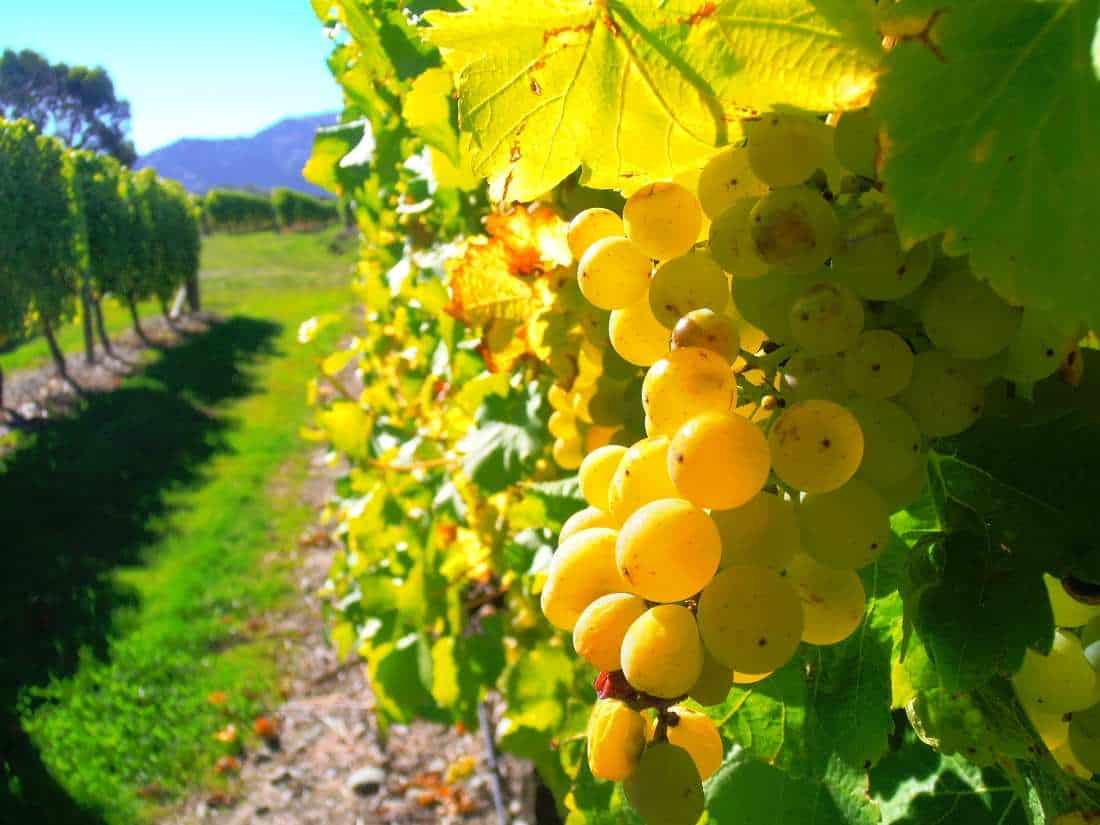

Planting methods
If you are planting a single bush of grapes, you will need to dig a hole. Well, if you plan to set up a vineyard, it is optimal to plant in trenches.
Sapling selection
Varietal grapes should be purchased in nurseries so as not to buy a plant that is sick or does not correspond to its name.
Be sure to inspect the seedling for damage, defects, flaws. A healthy plant also looks healthy: without any signs of rot, disease, wilting.
Planting tips
After the young plant has been successfully dug into the ground, it is watered abundantly and attached to the support. In addition, it is recommended to mulch the soil to keep the roots moist longer.
Let's find out what kind of care is required for the Triumph grapes.
Watering
Moistening the soil in the vineyard is required regularly. If there are a lot of bushes, drip irrigation is optimal: with this convenient system, you can not only water the grapes, but also fertilize them.
Remember to stop watering when the fruit is ripe. This will help to avoid cracking, loss of sugar content.
Pruning
Shoots of Triumph grapes grow powerful and long: they must be shortened. Usually, five eyes are left on each shoot: such rationing makes it possible to collect a bountiful harvest, allows you to preserve the large size of the berries.
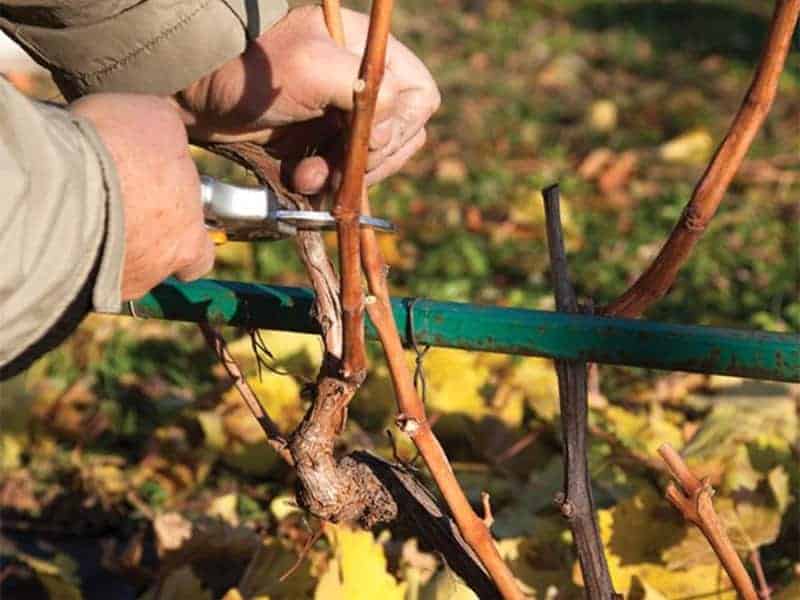

In addition to forming, sanitary pruning is also necessary: remove broken, damaged, sick branches in time.
Prophylaxis
The variety is resistant to most diseases. However, from mildew and phylloxera, mandatory prophylaxis is required.
Wintering
Although the variety is frost-resistant and resistant, young plants need a must-have shelter. The first two years, the grapes are covered every fall, using traditional methods: removing from the trellis, strapping, placing under the covering material.
Starting from the third year of life, you can not hide: of course, if there is no higher than forty degrees of frost in your area.

